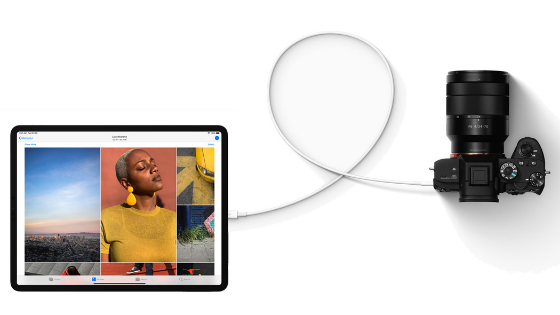During the 2019 WWDC, Apple introduced iPadOS, based on iOS 13 but expressly perfected for a more professional and productive use by tablet. One of the most important limitations of the iPad, in particular of the Pro models, was in fact the low integration with external storage memories (Hard Disk, USB flash drives, SD cards and much more). The goal of the Cupertino company was to create a sort of cloud-based device but, at least once, preferred to listen to users and allow anyone to access their files on physical systems.
Thanks to iPadOS it is in fact possible to use the “File” application, present as standard on all iPads, as a real file manager. So let’s see how to make the most of the company’s tablet power and the flexibility of iOS 13.

Use the “File” app as a complete file manager
To read files and folders on iPad you will need to have a storage device with a USB-C or Lightning connector (depending on the version of the device). Alternatively, the use of compatible and updated adapters and “dongles” is not excluded. Last requirement, absolutely crucial for the success of the operation: iPadOS to the latest version available installed.
- Connect the storage device (also using adapters) to the single iPad input port
- Open the “File” application
- Access the “Browse” tab and open the side menu
- Click on the name of the connected device and browse through the files present
From here you can of course operate at will: move, rename, modify, open with apps on the iPad and much more.
The connection of devices of this type seems to work perfectly on iPads equipped with USB-C, while on those characterized by the Lightning connector (also compatible with iPhone) problems may occur. If in fact on reading USB flash drives and SD cards there seem to be no limits, as far as Hard Disk is concerned, the situation is quite different. These in fact require high consumption and for this reason it may be necessary to power the device during reading (and therefore to have an adapter with a double output). We repeat that this limit only applies to devices with a Lightning connector.
Doubts or problems? We help you
If you still have any doubt or suggestions related to this article then feel free to leave a comment in the box below or contact us via our dedicated page.